
Jul '12 - Jan '13
A number of jewels reside within the confines of Gujarat's former capital city. After independence in 1947, strong squalls of design impunity caught the trousers of some noteworthy wielders of the T-square and pencil, and drug them halfway around the world. The denouement is a sprinkling of modernism in the Ahmedabad Karahi- here and there, like the chana in my paneer tikka masala. Ah, yes, that's Corbu I taste, and how smooth the Khan goes down, and how fitting the Doshi is!
Corbu's buildings, here, were said to be supervised by Doshi himself. I imagine to some effect, during his residency, Doshi fancied some sentiment towards the city. He opened his practice here in 1955. Although not built until 25 years thereafter, his office Sangath, still holds fidelity to his dogmatic fashion.
The scribbles of an address and the words “Doshi Altier” written in a small notebook confounded four rickshaw drivers. It took the scholarly mind of slacks, a tie, and the businessman who wore them to expel understanding, and even so, it was I who discerned the edifice from amidst the trite and decrepit. Through a single gate upon a concrete wall, beyond a forest, and finally to the semblance of two vaults one enters the courtyard, but lo! There exists no such entry door! Instead one shall do the Frank-Lloyd-Wright, and circumnavigate the entire garden, examining the consolatory music, brimming baths, and groping glare of the white tiles on her arches.
Their hospitality goes unmatched. One must simply walk past their threshold to see a guild of interns assigned to aid in a tour of one hours time. The structure itself gives rank to natural lighting, opening north through the vaults, skylights, and clearstory. Her roof is highly accessible and adventuresome, but in direct light, as blinding as a Ghery concert hall. A recent addition provides wiggle room for the bustling firm, but if her platoon sees fit to double, I see not how such expansion is viable without disrupting the garden progression. And surely a second floor atop her vaults would be troublesome.
On occasion it becomes necessary to lose ones sense of hearing for the sake of architecture. The Gandhi Labor Institute (like most establishments) sees fit to guard the entry gate, filtering street dog from student, and teacher from tourist. But these guards have an inconspicuous debility- yes these beasts are among the most lethargic of the Indians, to which I take full advantage. A stealthy vector and bold stride past his post arouses minimal attention, perhaps until the western backpack is discovered. At this point, shouts commence, but no answer from this western foe. He flinches not one inch, but proceeds around the first found corner. And here is where their lethargy shines brightest, for no pursuit is sponsored.
One finds even more vaults here, as if to glorify Kimbell Art Museum anew. From what little evidence I gathered, she functioned quite efficaciously. Though my skulking gained no view of her classrooms for which her natural lighting I wished to see. Her hallways were cool and wide, fit for a trifle of a discussion I suppose. The hostel (dormitory) was four stories in height, each room with is own balcony, each floor above the first with its own grand balcony, and the first floor, a courtyard, operative but not heartening. I exited via the neighboring vacant lot by making quick work of the perimeter wall.
To CEPT drivers, the day grows long! What a bustling metropolis she was, fit with pupils of study and leisure alike. Her undercarriage, fit for a design presentation of great magnitude, housed a ping-pong table- occupied. A great field for sporting rests between the architecture/planning building, and the interior design and landscape architecture buildings. It was also occupied. The printing room, and the canteen (a shack of a space behind the printing room discharging the abruptness of beginning drums 101) all occupied. I shall venture so far as to apprise that even the studios were filled with discourse and drudgery. At night, I returned to observe a football match before retreating to dinner with new friends. When architects speak of studio culture, surely they speak of CEPT.
I ask myself, is it the facility or its inhabitants who incur such benign formalities. Surely the northern windows, to which such ample diffuse light is provided, welcome diligent workers. The copious number of doors, to which cross ventilation befalls, bring a coolness to the air. The commodious arenas for ping-pong, cricket, and football alike are too favorable an occurrence to exist unscathed by sportsmen. Perhaps the students possess these inclines and the architecture merely warrants such action.
For what it's worth, Doshi's Ahmedabad brings light to an old torch, but more imperatively, integrity and satisfaction to the people of Gujarat and India.
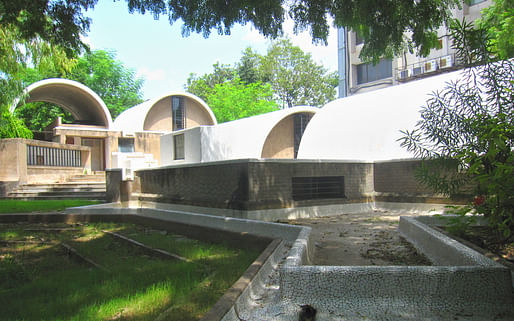 Sangath from her garden
Sangath from her garden
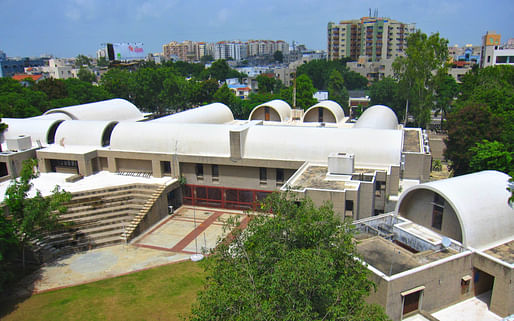 The Gandhi Labor Institute
The Gandhi Labor Institute
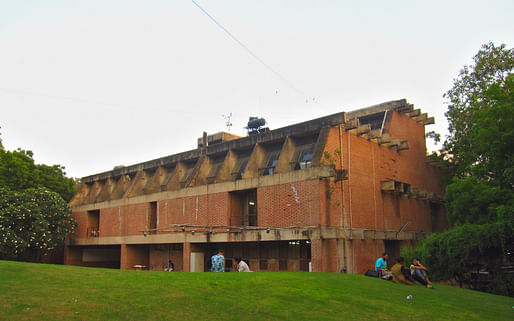 CEPT Architecture and Planning Building
CEPT Architecture and Planning Building
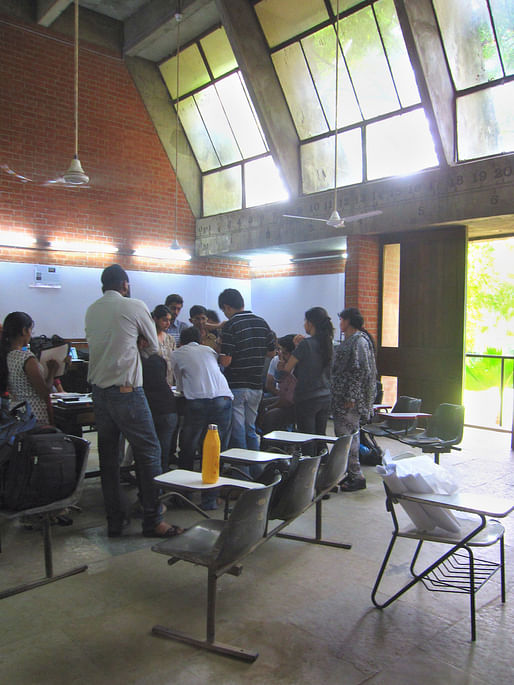 Colloquium in progress
Colloquium in progress
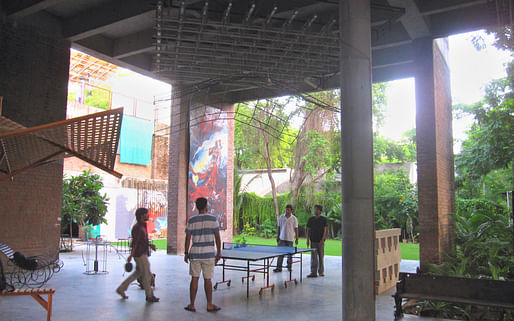 CEPT's interior design patio/gallery/arena
CEPT's interior design patio/gallery/arena
An Indo Inquisition is a thirteen-week train expedition across India. The journey will document the influences of international modernism and British occupation, as well as compare the effects of wealth accumulation, culture, religion, and poverty with economic growth and their effect on the built environment.
No Comments
Block this user
Are you sure you want to block this user and hide all related comments throughout the site?
Archinect
This is your first comment on Archinect. Your comment will be visible once approved.